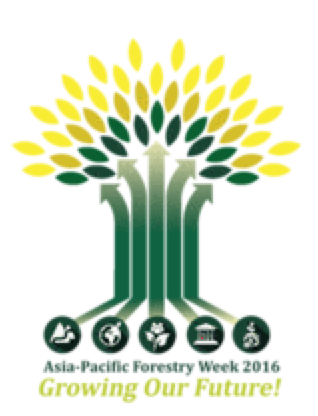Participants at Asia-Pacific Forestry Week stressed the need for society to proactively integrate forestry into the wider context of sustainable development.
The regional gathering brought together policy makers, forestry experts and stakeholders from 30 countries, who discussed forestry in relation to the Sustainable Development Goals (SDGs), governance, regional trade agreements, sustainable production, and climate financing and related safeguards.
 1 March 2016: Participants at Asia-Pacific Forestry Week stressed the need for society to proactively integrate forestry into the wider context of sustainable development. The regional gathering brought together policy makers, forestry experts and stakeholders from 30 countries, who discussed forestry in relation to the Sustainable Development Goals (SDGs), governance, regional trade agreements, sustainable production, and climate financing and related safeguards.
1 March 2016: Participants at Asia-Pacific Forestry Week stressed the need for society to proactively integrate forestry into the wider context of sustainable development. The regional gathering brought together policy makers, forestry experts and stakeholders from 30 countries, who discussed forestry in relation to the Sustainable Development Goals (SDGs), governance, regional trade agreements, sustainable production, and climate financing and related safeguards.
The Asia-Pacific Forestry Week took place from 22-26 February 2016, in Clark Freeport Zone, Philippines, organized by the Food and Agriculture Organization of the UN (FAO) and the Asia-Pacific Forestry Commission, in partnership with the Department of Environment and Natural Resources of the Philippines. The main theme was ‘Growing Our Future,’ to highlight a holistic approach to forestry and the need to integrate forestry with sustainable development more broadly.
Discussions were organized under five streams. Under ‘Pathways to prosperity – Future trade and markets,’ presentations and discussions addressed: the situation and trends in world forest products trade; partnerships and forest investment; timber legality issues and forest law enforcement, governance and trade; and market access, among other issues. Under ‘Tackling climate change – challenges and opportunities,’ participants explored linkages between the Paris Agreement on climate change and forestry management in the region, and how forest management can in turn support the climate agenda for the benefit of forests and people. Sessions addressed, among other issues: REDD+ safeguards and related benefit-sharing mechanisms; forest and land fire and landscape transformation; forest development planning for climate change, resilience and poverty reduction; and innovative tools for sustainable forest management under climate change.
The third stream, titled ‘Serving society – forestry and people,’ explored: the role of forests and forestry in achieving the SDGs; community forestry; community-based sustainable forest management and food security; agroforestry; fair and equitable benefit-sharing; gender equity; and the Forests and Water Action Plan. Under the stream on ‘New institutions, new governance,’ participants addressed: forest policies and governance in relation to tenure reform and improved livelihoods; communities’ and indigenous peoples’ forest resource rights; interlinkages between tenure and land rights and food security; and evidence-based forestry, among other issues. Finally, under the theme ‘Our green future – green investment and growing our natural assets,’ participants considered issues related to: management of transboundary cases of forest invasion; restoration initiatives; forestry education; and investment mobilization.
This year’s Asia-Pacific Forestry Week took place in conjunction with the 26th session of the Asia-Pacific Forestry Commission, one of FAO’s regional forestry commissions. Over 1,000 participants attended the Week, making it the largest forestry event in the region this year. [Meeting Website] [Meeting Programme, including links to presentations and summaries]